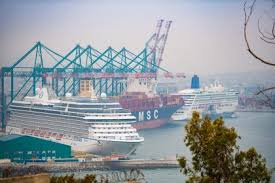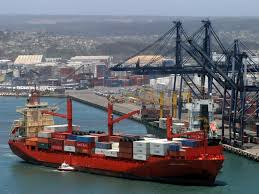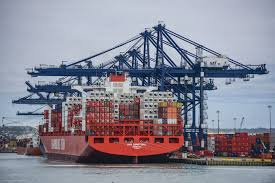How is the logistics network connected to the Port of San Antonio?

How is the logistics network connected to the Port of San Antonio?
How is the logistics network connected to the Port of San Antonio? The Port of San Antonio is not just a vital maritime hub
It is also a key component of a broader logistics network that facilitates trade and transportation.
Understanding how this network functions provides insights into the efficiency of the port and its role in the regional economy.
Overview of the Logistics Network
A logistics network encompasses various transportation modes, facilities, and systems that work together to move goods from one location to another efficiently.
The Port of San Antonio plays a central role in this network, connecting maritime transport with land-based logistics such as trucking and rail.
This integration is essential for ensuring that cargo moves swiftly and smoothly.

Road Connections
One of the primary modes of transportation linked to the Port of San Antonio is the road network.
Major highways and roads connect the port to key cities and industrial areas in Chile, allowing for efficient truck transportation of goods.
This road connectivity is crucial for timely deliveries and helps businesses meet customer demands.
Rail Links
In addition to road transportation, the Port of San Antonio is also connected to Chile’s railway system.
Rail links enable the movement of bulk cargo and containers over long distances, providing an efficient alternative to road transport.
The integration of rail services into the logistics network enhances the port’s capacity to handle various cargo types.
Intermodal Transportation
The Port of San Antonio is a key player in intermodal transportation, which involves the use of multiple transport modes to move cargo.
This system allows for seamless transfers between ships, trucks, and trains, optimizing the supply chain.
Such flexibility is a significant advantage for shipping companies and their clients.
Warehousing and Distribution Centers
Connected to the logistics network are various warehousing and distribution centers located near the port.
These facilities play a crucial role in storing and managing goods before they are dispatched to their final destinations.
The proximity of these centers to the port minimizes transit times and enhances overall efficiency.
Technology in Logistics
Modern technology plays a vital role in the logistics network surrounding the Port of San Antonio.
Advanced tracking systems, automated inventory management, and data analytics streamline operations and improve visibility throughout the supply chain.
Such technological integration ensures that stakeholders can monitor cargo movement in real time.
Customs and Regulatory Framework
The efficiency of the logistics network is also influenced by the customs and regulatory framework at the Port of San Antonio.
Streamlined customs processes reduce delays and ensure compliance with international trade regulations.
A well-organized customs system is essential for maintaining the flow of goods through the port.
Challenges in Logistics
While the logistics network connected to the Port of San Antonio is robust, it is not without its challenges.
Traffic congestion, especially during peak shipping seasons, can lead to delays in cargo movement.
Addressing these challenges requires ongoing investments in infrastructure and logistics management.
Future Developments
Looking ahead, there are plans to enhance the logistics network surrounding the Port of San Antonio.
Proposed improvements include expanding road and rail infrastructure, increasing capacity for intermodal transfers, and upgrading technology systems.
These developments aim to further optimize the logistics network and enhance the port’s operational efficiency.
Economic Impact of the Logistics Network
The logistics network connected to the Port of San Antonio has a significant economic impact on the local and national economy.
By facilitating trade, it supports jobs in various sectors, including transportation, warehousing, and distribution.
A well-functioning logistics network is vital for fostering economic growth and competitiveness.
A Vital Link in Trade
The logistics network connected to the Port of San Antonio is a vital element in the region’s trade ecosystem.
With its extensive road and rail connections, modern warehousing facilities, and commitment to technology, the port is well-equipped to handle the demands of global trade.
As the logistics network continues to evolve, the Port of San Antonio will remain a key player in enhancing Chile’s position in international commerce.





Leave a Reply